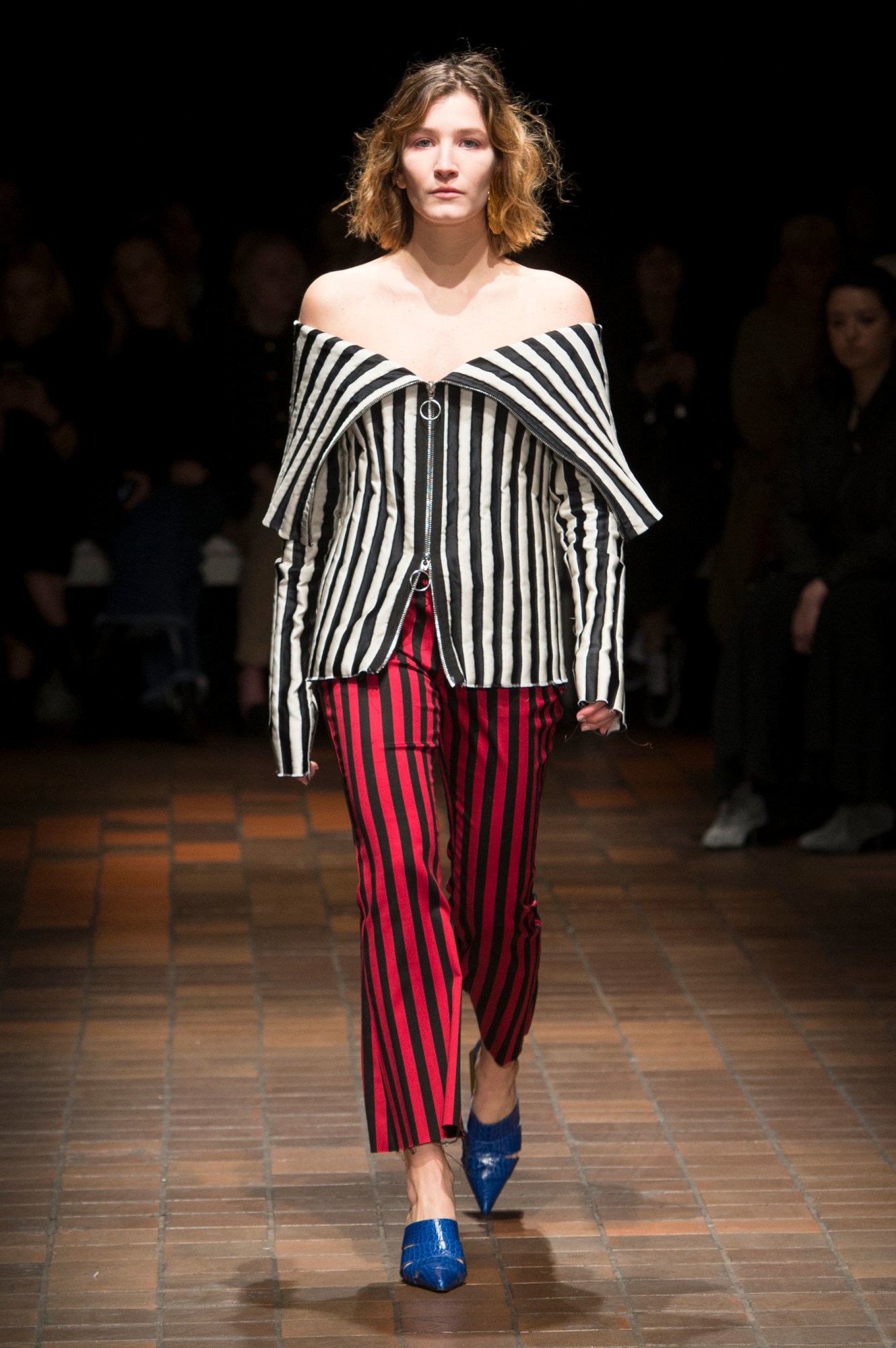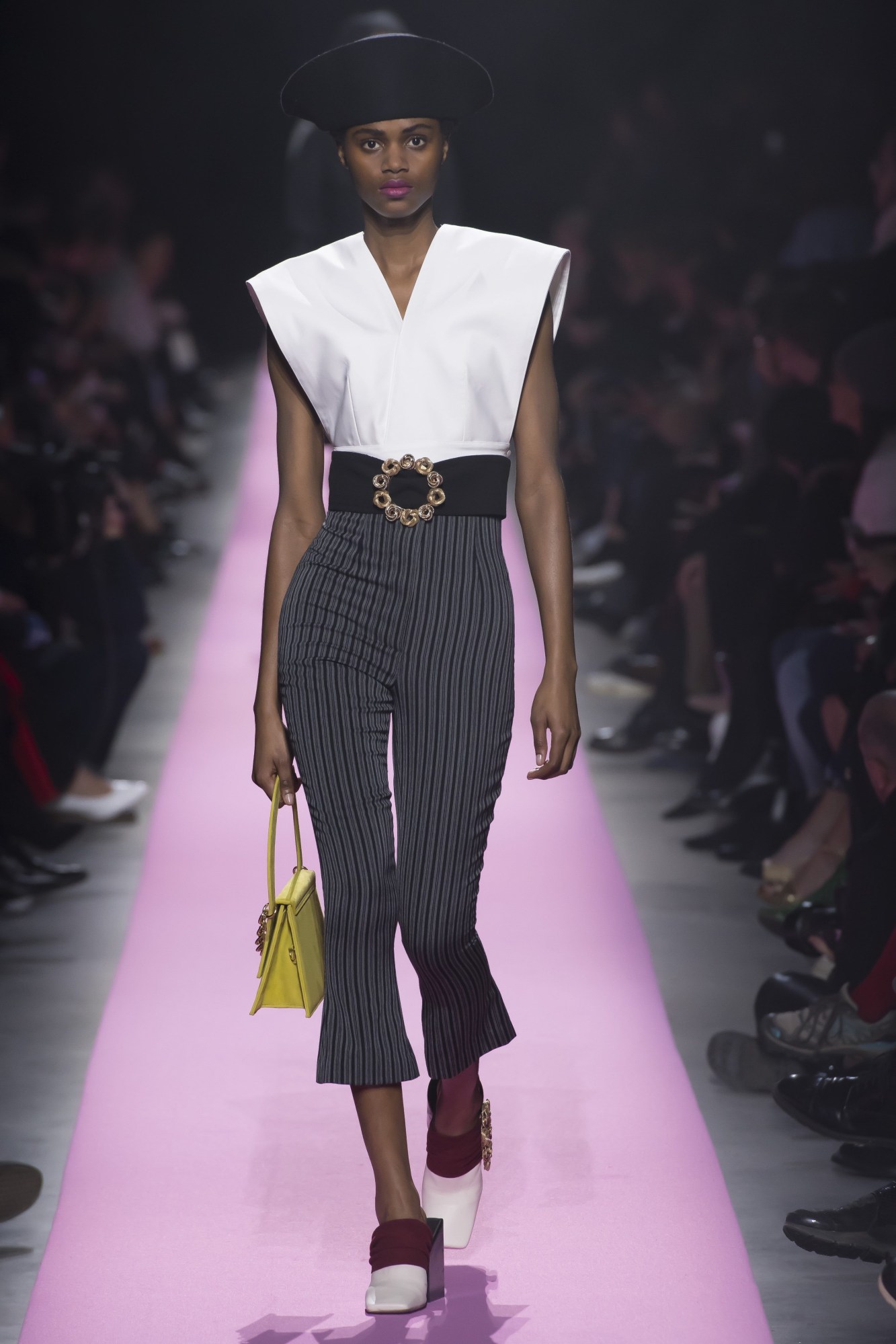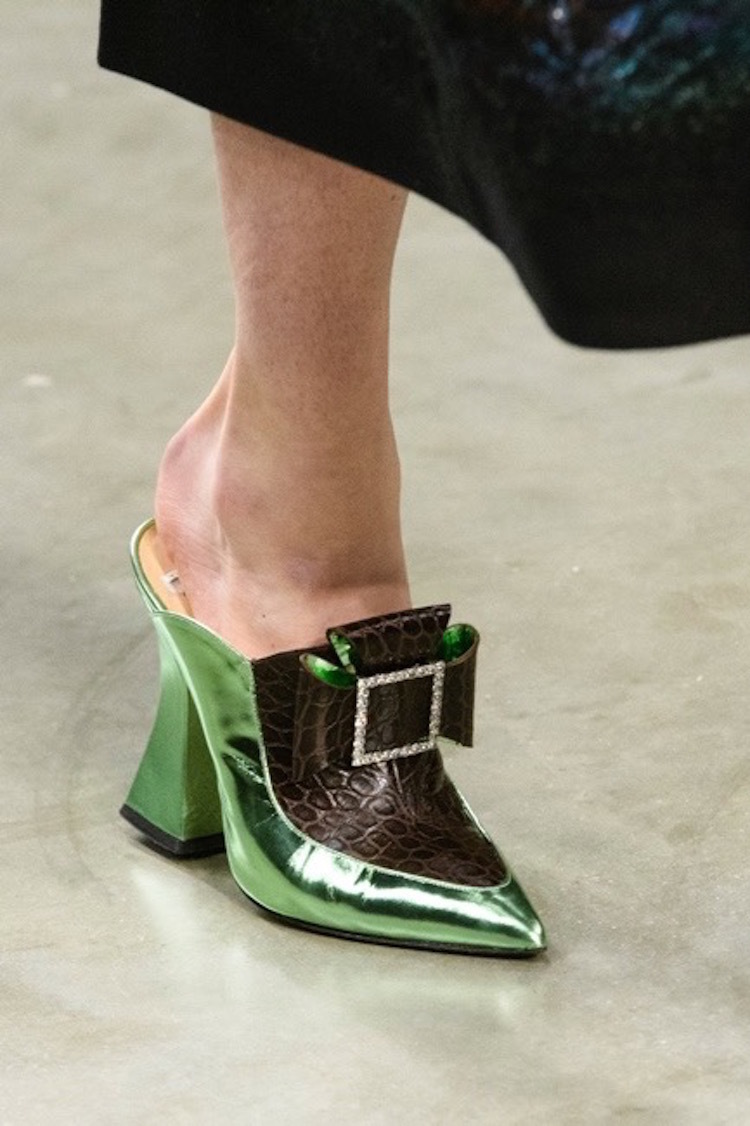In season two of Sex and the City, Charlotte York is seduced by a pair of angular white mules in the window of a store. Overcome by both their perfection and price tag, she allows a store clerk with a foot fetish to give her a below-ankle massage in lieu of handing over her credit card. (This was 1999, and so the salesman slips the mules onto Charlotte’s pedicured feet past a toe ring.) The scene tells us a lot about mules: they are luxuriously impractical, historically fetishized, and now inseparably linked to the fashion of the late 90s and early 2000s.
Despite its connotations of classically attractive pin-up girls and 1950s boudoirs, the mule is perverse. By definition, it has no back, leaving the rump of the wearer’s heel exposed. If the main function of a shoe is to cover your foot and comfort your step, the mule has existentially failed for almost two millennia. Yet, mules are everywhere. This season, they clopped down the runways at Marques’Almeida, Jacquemus, and Eckhaus Latta. Mary Katrantzou presented an array of towering crystal-adorned backless heels that harked back to the mule’s other (pre-2000s) heyday in the court of Louis XIV.

But mules are far older still. There are Byzantine grave stones dating to the eighth century that show the deceased wearing mules.
The word “mule” comes from the Latin mulleus calceus, the term for the red shoes worn by Roman magistrates. And different takes on backless shoes are still worn across the former Roman empire: for example, the elegant leather babouche slippers of Northern Africa.
Towards the end of the middle ages, far less practical mules were adopted by 15th-century Venetians. Backless platform shoes similar to pattens — the elevated shoe covers that protected wearers from street muck — became beloved by the Venetian aristocracy and reached heights of up to 20 inches. Called chopines, or mules échasses (mules on stilts), they were a variation of raised Turkish harem slippers and promptly banned by the church of Spain for being “depraved and dissolute.” Nevertheless, riffs on the heeled mule lived on in royal courts throughout the renaissance. The first valet of Louis XIV was responsible for putting on Louis’s royal mules each morning, and at the end of the year was permitted to keep them.
Gainsborough, Fragonard, and Hogarth painted many mule wearers in the 18th century, when the shoes were still widely in fashion. In 1786, French nobleman Count de Vaublanc wrote in his memoirs that mules had become so high that women sometimes used canes to walk. By the middle of the 20th century, mules had lost most of their height but none of their impracticality. Kitten-heeled mules, often topped off with clouds of marabou, graced the feet of housewives and movie stars alike, becoming symbols of pretty boudoir sensuality. Mules have been worn by screen queens from Marilyn Monroe to Divine in Pink Flamingos to evoke a kitschy form of seduction.
By 2015, Jeremy Scott had taken the mule as sex symbol to its logical conclusion, by creating a blow-up pink plastic version. Together with the Brazilian jelly accessory company Melissa, Scott fashioned the most impractical and camp version of the backless high heel possible: made from bubble-gum pink rubber with 5-inch heels and the air nozzle of an inflatable toy.

That same season, another strain of mule was also taking over the runways. Alessandro Michele showed his first collection as the creative director of Gucci, converting the storied signature shoe of the Italian house into a mule. The Gucci loafer appeared with its heel replaced by an overflowing fur insole, a hybrid shoe that subverted the formal country club shoe for a louche and eclectic new era. By spring, the shoes (and ensuing knockoffs) were almost everywhere you saw a woman wearing jeans with frayed, cut-off ankles.
The backless Gucci loafer — which Michele has reworked in nearly every subsequent show — epitomizes the heel-less mule’s role as a signifier of laid-back luxury. Flat mules are easy to put on and have an inescapable air of slipper about them. They suggest you just woke up (whether it’s 10am or 5pm) and that maybe don’t need to work. They also demand you have the money to get regular heel-tending pedicures and pay for cabs. Similar beautifully impractical shoes have also been put forward by Mary-Kate and Ashley Olsen at The Row and Phoebe Philo at Céline. For resort 2017, Balenciaga designed padded mules (both flat and heeled) that evoked hotel slippers, in a winking completion of this trend for privileged housebound luxury (a sister of the runway pajama trend).

In January of this year, Pinterest predicted that “backless shoes” would be one of the major trends of 2017. Along with bell sleeves and slip dresses, images of mules were saved by Pinterest users over 500,000 times at the tail-end of 2016. And they were still visible in every city during fall/winter 17 fashion month. In Paris, Simon Porte Jacquemus’s story of a couture-wearing Parisian trying on gypsy style involved brightly colored mules with round wooden heels and crystal buckles. And in New York and London, Eckhaus Latta and Marques’Almeida’s versions played with the shoe’s so-wrong-it’s-right aesthetic.
Because no matter how high the price tag or how esteemed the label, there is something absurd about the mule. Much like crotchless panties and mesh shirts, the mule refuses to fulfill its basic sartorial duty. It sacrifices practicality for style. And that surrender to fancy — mobility be damned — is exactly what makes it magical.
Related: Crocs on the runway: from dream to reality
Credits
Text Alice Newell-Hanson
Photography Mitchell Sams
